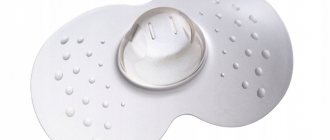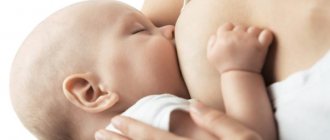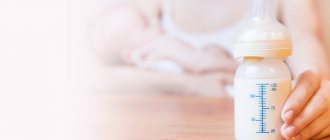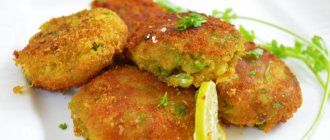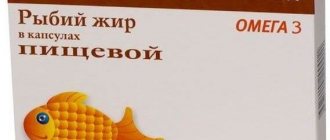Mother's milk is a unique product containing a full range of beneficial substances and antibodies necessary for the active growth and full development of the baby.
But what to do if the mother cannot be with the child all the time? Special containers for storing the product will help organize the process of feeding breast milk without interruptions.
All you need to do is fill the containers with expressed breast milk and store them. At the right moment, the container is opened, and the child receives the necessary portion of a nutritious, natural product.
What is it and why do we need it?
Containers for storing breast milk are special containers with a measuring scale that make the task of collecting and storing breast milk as easy as possible. They will be a real salvation for those mothers who, for some reason, are forced to leave their baby under the supervision of a nanny for a day (sometimes for a longer period of time).
In order not to interrupt the process of natural feeding, the woman expresses milk into a special container and sends it for storage. Thanks to this, the baby receives adequate nutrition for his age at the right time.
Which one is better to choose?
First of all, you need to decide which material is more suitable.
With careful and attentive handling, it is better to purchase a glass container; it will last a long time and will not need to be replaced.
If careful use is difficult to ensure, it is better to take a plastic container and not worry about broken dishes.
You also need to consider the storage period for which you need the container, the amount of milk your baby eats, and whether you plan to buy a breast pump. Milk jars are included with the breast pump, and if not included, you can buy them in the same store as the breast pump. This will make the process of collecting and transfusing breast milk very easy.
How to choose?
When purchasing a container for breast milk, first of all, you need to pay attention to the material of manufacture (glass or plastic) .
Glass is the safest material (does not emit toxic substances, does not change its structure when exposed to high or low temperatures).
The surface of glass containers does not absorb foreign odors and is not scratched by abrasive detergents.
Disadvantages include the high cost and fragility of the material (glass containers cannot be used to store milk in the freezer).
Plastic containers attract with their price, variety of shapes and colors, and lightness (convenient to take on the road). But when buying plastic products, you need to carefully study the labeling.
The “O” or “Other” symbol indicates that the container is made of polycarbonate.
Under certain conditions, this material emits harmful substances, so it is better not to purchase such a product for a child. The “PP” marking indicates that polypropylene was used to make the container , which can withstand the highest possible temperatures (up to +140°C) and does not emit any life-threatening substances upon contact with food.
Additionally, breast milk containers made of polypropylene must have a BPA free symbol (a marker that the plastic does not contain bisphenol A).
Also, when purchasing, you need to pay attention to the following points:
- compatibility with a breast pump (it is better to choose containers from the same manufacturer as the breast pump);
- the presence of a measuring scale (helps to accurately determine the volume of expressed milk);
- additional functions (it’s good if the container is equipped with a special device for removing air, which helps preserve even small portions of breast milk).
Breast milk cannot be re-sent for storage, so the container volume must be selected based on how much milk the baby eats at one time.
Storage containers
From glass
Glass storage containers are considered the most expensive. The high cost is due to their high quality.
In addition to the cost, they have some other disadvantages:
- Used only for short-term storage of milk.
- Requires sterilization before each use.
- Some milk fat remains on the walls of glass containers, which reduces the nutritional value of milk.
- They require careful handling so as not to break.
In addition to quality, jars have some other advantages:
- Withstands high and low temperatures.
- Easy and quick to clean.
- Do not turn yellow from long-term use.
- They do not emit harmful substances.
The cost of plastic containers is much lower than glass.
Made of polycarbonate (marked “O” or “Other”)
Advantages:
- Withstand temperature changes (do not deform or form cracks).
Milk in the refrigerator
Flaws:
- Low-quality polycarbonate can emit toxic substances; it is necessary to track the certificate.
- Transparent walls allow light to pass through, which leads to rapid breakdown of nutrients.
Made from polypropylene
If you choose between food-grade plastic utensils, it is better to choose polypropylene ones (marked “PP”).
Advantages:
- They have very high quality and safest material.
- Can withstand any temperature, up to +140 degrees.
- They do not emit toxic substances.
- Do not affect the quality and taste of milk.
Polypropylene bottles for storing and freezing breast milk
Minuses:
- Short service life;
- When in contact with sugar, fats and alcohol, they can release toxic substances (formaldehyde, phenol).
Mostly you need to buy milk containers made of special plastic - cloudy and quite soft. It doesn’t look so attractive, but it definitely won’t harm the child’s health. It is better to use such dishes 4-5 times if cracks or scratches do not appear on the inside.
If there is no special packaging or there is nowhere to buy it, then it is possible to store it not in a special container. The main thing is that it does not contain bisphenol A (BPA, 3, 7). This element in the composition of the container causes disruption of the endocrine system. Breast milk should not be stored in formula inserts because they will leak and destroy the components of breast milk. It is important to write on the container what date the milk was expressed. The container with milk must be tightly closed.
How to use?
Collecting breast milk in a container is carried out in the early morning (during the day it is more difficult to express the required amount of milk).
The baby is fed with one breast, and the other breast is expressed , filling a prepared container with milk (the container is first treated in a sterilizer or boiled over low heat for five minutes).
The milk is expressed until it stops flowing in streams (during the process it is necessary to take short rest breaks of three to four minutes).
The filled container is tightly closed to the brim with a lid, onto which a sticker is glued indicating the date and time of pumping (alternatively, instead of a sticker, you can use a piece of plaster).
Where can I buy?
You can purchase containers for storing breast milk at any children's store, pharmacy, as well as on the websites of manufacturers or suppliers of various brands.
When purchasing, pay attention to:
- ease of use (twist in your hands);
- strength and reliability upon visual inspection;
- absence of cracks, scratches and other defects;
- tightness of the lid.
You should not choose products from China or from dubious manufacturers.
Where is the best place to store a container with expressed product?
For those who are going to feed the baby with expressed milk during the day, it is better to store the filled container at room temperature , on the table, away from direct sunlight.
If long breaks are planned in breastfeeding, the filled bottle is stored in the refrigerator or freezer.
It is better to freeze breast milk in the amount that the baby eats at a time (usually the norm does not exceed 120 ml). Re-freezing milk that has already been thawed is strictly prohibited.
Do not place containers of breast milk in the refrigerator or freezer door. Constant temperature changes that occur when opening and closing the door can negatively affect the quality of storage of the dairy product.
Reviews from parents
Elena Pochueva, Slavgorod. I bought Philips Avent containers before my son was born. The fact is that I couldn’t completely leave work, so I knew that I would have to leave the baby for 4-5 hours. I didn’t regret the purchase: it’s convenient to express and feed (I bought a pacifier). Now I use containers for storing porridge and soups. They are easy to wash and do not take up much space in the refrigerator. Svetlana Vagina, Novokuznetsk. I had to buy containers several times because my daughter refused to eat frozen milk. In the end, Medela saved the day. To be honest, I didn’t notice any difference with other companies, but for some reason the child only ate milk frozen in these containers. Rarely used when leaving the baby with her grandmother.
Natalya Zharkova, Taishet. I bought a set of “Canpol Babies” containers. Of the minuses: after feeding there is a lot of milk left, which has to be poured out. One of the bottles burst when I sterilized it in hot water. The containers are easy to clean and do not take up much space. Overall, I'm happy with the purchase.
How to choose bags for freezing breast milk?
How long is it stored?
Expressed breast milk can be stored in room conditions (air temperature from +22°C to +26°C) for no more than 6 hours. The best storage option is in the refrigerator . At temperatures from 0°C to +4°C, breast milk in a container retains its nutritional value for up to eight days.
Breast milk can be stored in the freezer (at a temperature of -13°C) for no more than three months. Containers of breast milk can be stored in a deep-freeze chamber (temperature -18°C) for up to six months.
Before freezing, place the container with expressed milk in the refrigerator for two hours , then in the freezer drawer. The decrease in temperature must be gradual, otherwise shock freezing destroys the nutritional value of mother's milk.
Terms of use
Purchased containers for storing milk meet three important requirements - suitability for refrigeration, strength and sterility, so they are easy to use. There are several basic guidelines regarding the correct use of bags and containers:
- Before pumping and filling the milk container, be sure to wash your hands thoroughly;
- a sterile container or bag is opened and milk is poured into it. If the vessel is intended for fixation on a breast pump, then the transfusion stage can be skipped;
- It is not recommended to fill the vessel completely, since during the freezing process the liquid expands and it may burst;
- After filling the bag, you need to release excess air from it, and only then close the clasp. Simply close the container with the included lid;
- in a specially designated place or on a sticker from the kit, it is necessary to record the date of pumping in order to comply with shelf life;
- one pumping - one container. Even if it was not possible to fill it with the desired amount of milk, next time you will have to take a new one, since mixing a product obtained at different times is prohibited;
- to extract the liquid, the bag is cut off at the top or along the bottom at the place where the line was drawn;
- It is worth understanding that the actual volume of liquid may not exactly coincide with the marks on the container or bag used; the printed scale is usually used to roughly guide the amount of milk, but is not a reference.
In the freezer, breast milk in any type of container can be stored for 6–12 months, in the refrigerator - no more than 5 days (provided it is placed on shelves near the back wall, but not on the doors).
TOP 5 best products
On the shelves of children's stores and specialized departments of pharmacies with goods for babies there is a wide range of containers for storing breast milk. The following manufacturers deserve special attention:
Philips Avent
Set of ten sterile containers, adapter for connection to a manual breast pump . The tightly screwed lid reliably protects the container from leaks during transportation or storage.
The reusable Avent container (volume 180 ml) is made of high quality plastic, suitable for storing breast milk in the refrigerator or freezer.
The average cost is 1500 rubles. (per set). Read reviews here, here and here.
Happy Baby Milk
Set of six containers for storing breast milk and baby food. The containers are made of polypropylene - a safe, environmentally friendly plastic that does not enter into chemical reactions with food and does not release substances hazardous to health during sterilization.
The containers are hermetically sealed with lids with a special recess (helps to carefully place the container in the refrigerator or bag). The volume of one container is 180 ml.
The average cost is 650 rubles. (per set). Read reviews here.
Medela
Set of three containers with lid . Breast milk collection containers (150 ml each) are compatible with Medela mechanical and electric breast pumps. The containers are made of polypropylene and do not contain bisphenol-A. The containers can be used as a feeding bottle (silicone nipple must be purchased separately).
The average cost is 850 rubles. (per set). Read reviews here, here and here.
Canpol Babies
Set of four containers (180 ml each) . The container is made of polypropylene, ideal not only for storing breast milk, but also a variety of baby food.
There is a special scale on the wall that helps you accurately determine the amount of expressed milk and the volume of product consumed. The containers are compatible with the Easy Start breast pump. The thoughtful shape of the lid allows you to place the containers very compactly in the refrigerator. The average cost is 800 rubles. (per set).
Nuk
Set of three containers for collecting and storing breast milk. Reusable containers can withstand sterilization at high temperatures .
The containers are compatible with the NUK Sensitive breast pump and can be used as a feeding bottle with the NUK FIRST CHOICE nipple. The average cost is 600 rubles. (per set).
You should not risk your baby’s health by buying a cheap product from an unknown manufacturer. The quality of the container for storing breast milk must be confirmed by appropriate certificates (the seller is obliged to issue it at the buyer’s request).
Types of milk storage containers
Containers intended for breast milk must meet sanitary and epidemiological standards and ensure the safest possible storage of a valuable product. Conventionally, all produced options can be divided into two large groups - containers and disposable bags, each of which has its own advantages.
Containers
Solid reusable containers for milk are popular due to their practicality - once you have purchased the required number of containers, you no longer have to worry about what to store and freeze food that is valuable to your baby. Certified products are safe for children and can withstand temperature changes over a wide range. The most popular brands of containers are:
- Philips Avent Via. Sold in 5 and 20 pieces per package (10 with a capacity of 180 ml and 10 with a capacity of 240 ml). The vessels are sterilely packaged, and before the first use they do not need to be specially prepared; the material is plastic without harmful additives. They are subsequently suitable for steam sterilization. They are equipped with tightly screwed lids, which protect against spills and foreign liquids or odors getting into the milk. They have a flat bottom, so they stack stably on top of each other and fit compactly in the refrigerator or freezer. The containers are compatible with breast pumps from this manufacturer, so you can express milk directly into the storage container. The approximate cost of one container is 120 rubles;
Philips Avent Via containers are equipped with lids and attachments for attaching to a breast pump - Medela bottles, capacity 150 ml and 250 ml. Swiss milk containers are safe, made of medical polypropylene, do not contain bisphenol A and do not harm the baby’s health. For convenience, they can be attached directly to the breast pump. The wide neck makes it easy to collect and pour out the milk, and the lid screws on tightly to prevent spillage. The approximate price of one piece is 250 rubles;
Medela bottles are made from safe polypropylene and can be stored in the refrigerator or freezer - Canpol Babies containers of 180 ml. Made from polypropylene, safe for children. The containers can be used for storing and freezing breast milk; they are tightly closed with the lids included in the kit. The wide neck makes filling easy, and the shape of the bottom and lid allows you to place the vessels in the refrigerator, stacking them on top of each other. The approximate cost of one container from the set is 120 rubles. Canpol Babies containers are reusable and come in 180 ml capacity
In general, using containers is convenient and safe if all rules are followed, but there are also disadvantages. So, if you need to freeze milk in large quantities and store it for a long time, you will need to purchase a large number of vessels at once, and this will not be cheap. Although many manufacturers create conveniently shaped containers for compact placement, they still take up more space than bags.
For me, Avent containers have become indispensable, because... I was faced with such an unpleasant procedure as constantly pumping and feeding my baby through a bottle. There were always not enough bottles (and I wanted to at least not get up at night and wash them), so I decided to buy containers.
Diana
https://irecommend.ru/content/nezamenimaya-veshch-pri-kormlenii-mnogo-foto
I’ll say right away that I use a Medela bottle to store expressed milk before sending it to freezer bags and very rarely with a pacifier when I need to feed the baby without me. Realistically speaking, I am very pleased with the Medela bottle, despite the disadvantages: 1. After long-term use, the scale on the bottle is erased; 2. Since the plastic is of high quality and quite soft, such a bottle cannot be washed with a brush, I cut off a soft sponge and rinse it with it. Minor inconvenience.
Flora
https://irecommend.ru/content/realnoe-kachestvennye-butylochki-ne-pakhnut-no
Packages
Sterile breast milk bags are very popular today due to their advantages:
- milk does not require processing after opening the package;
- the containers are soft and compact, they save space in the refrigerator or freezer;
- they can be attached directly to the breast pump, which reduces the risk of bacteria and foreign odors;
- They are disposable, you don’t need to wash anything after use, just throw it away.
Let's look at the main product manufacturers:
- Lansinoh. Available in boxes of 25, 50 or 100 pieces. The capacity of one bag is 180 ml, it has a scale in milliliters, allowing you to navigate the amount of contents, and in the upper part there is a place for marks with a marker. The bags are sterile and equipped with a double zip-lock fastener, which allows for hermetically sealed closure, removing excess air, which reduces the likelihood of milk spoilage. Made from special medical polyethylene without harmful components. There is a special insert on the bottom that ensures the stability of the disposable container in a vertical position. The cost is average for this category of goods, one package will cost 18–20 rubles;
Lansinoh milk cartons with a capacity of 180 ml per pack of 25 pieces - Canpol babies. Packages with a capacity of 150 ml are sold in a pack of 20 pieces and are equipped with a similar number of self-adhesive labels on which you can make notes. Made from safe, dense raw materials, sterilized, which allows you to maintain the freshness and quality of the contents. The durable clasp and bottom shape allows you to store bags vertically or horizontally. The hole for pouring milk is the width of the entire package, and to open and remove the contents you need to cut or tear along the line marked at the top. The price per piece is comparable to other products in the group;
Bags for storing and freezing milk Canpol babies are available with a capacity of 150 ml and have a convenient shape for storage - Tommee Tippee. The package contains 36 bags with a capacity of 350 ml, they are sterilized and can be used immediately for storing milk without prior preparation. The wall material does not contain toxic components and is safe for children. The wide neck makes it easy to fill the container, and the tight double clasp protects against leakage. There is a sticker at the top of the package to record the necessary information about the contents. The price per piece is approximately 17–18 rubles, typical for this segment;
Tommee Tippee bags are distinguished by their large volumes (350 ml), but have an average price - Philips Avent. The package contains 25 bags of 180 ml each, manufactured in Great Britain. The bags have a warranty seal, which provides additional product protection and safety of first use. The eco-passport confirms that the containers are made of safe and environmentally friendly material without harmful additives. Sterilization is carried out by the electron beam method, and the bags do not require any preparation for their intended use. The walls are double-layered, all seams are reinforced, which makes the bags durable both for storage at different temperatures and for transportation. For the convenience of pouring milk, the manufacturer has equipped its products with a bottom for a stable vertical position and a wide neck opening. After defrosting, pouring the milk into a bottle, simply cut off the bottom of the package;
Philips Avent manufactured in the UK have a standard capacity of 180 ml, and are equipped with a tamper-evident seal to ensure safety - Medela Pump and Save. In a package - 2 or 20 pieces of 150 ml. The bags are equipped with self-adhesive tape, which allows you to attach them directly to the breast pump, providing additional protection for your milk. The walls are double-layered, allowing you to store food for your baby in the freezer for a long time, and the material itself, in addition to safety, helps preserve the beneficial properties of the contents, keeping air and moisture out. The inner layer is made of polyethylene, the outer layer is made of polyester, and the bags are tightly sealed on the sides to prevent leakage. The products are the most expensive of all those reviewed, the average cost of one package is 3 times higher than the price of others class=”aligncenter” width=”400″ height=”400″[/img] Medela Pump and Save - bags for storage and freezing that can be fixed directly on the breast pump for maximum preservation of milk quality
The packages also have disadvantages related to the basic principles on which their operation is based. So, the main disadvantage is the impossibility of reuse. Such containers are exclusively disposable, and if you need to constantly store milk, the cost of purchasing them will be high.
I bought Lansinoh packages as the cheapest. I was immediately struck by the strong plastic smell when opening the package. The polyethylene was thin and strange to the touch, and the seams were poorly sealed, uneven and unreliable. It froze fine. I was pleased with the convenient strip for signing the date of freezing. But when defrosting, the milk separated and acquired a strong disgusting plastic smell and a bitter plastic taste. Naturally, I decided that it was unsafe and did not take risks.
Tosha
https://otzovik.com/review_82235.html
Frozen milk looks compact, no leaks were noticed, not a single Philips Avent package was torn or cracked. The milk retained its quality after defrosting. I recommend this thing, because milk can burn out at any moment, and this way you are reliably on the safe side. The only negative is it's expensive.
Angelica
https://otzovik.com/review_4066019.html
When I was preparing for the birth of my son, my nieces, who by that time had fattened their children, gave a lot. One of their gifts was Medela Pump and Save Sterile Breast Milk Storage Bags since everyone knew I would be breastfeeding my son. At first I didn’t appreciate the charm of these bags; my son was hospitalized and all the milk that I expressed was taken to the hospital in containers; bags were not allowed. Having been discharged home with my son, I appreciated the packages. I decided to keep the milk for future use and expressed about five bags of milk, they helped me out from time to time. The lock on the bags is excellent, I stored the bags in the freezer lying down, and there was never a single time when the bags leaked.
Masha
https://otzovik.com/review_841220.html
Alternatives
A good replacement for containers for storing breast milk are special disposable plastic bags . These sterile products do not require heat treatment before use.
A special shape with a stable bottom helps you express milk directly into a storage bag without loss. Strong clips and zippers ensure the bag is sealed.
Soft disposable bags do not take up much space (very convenient when loading milk containers into the refrigerator or freezer). The only downside to breast milk bags is that they cannot be reused.
Alternatively, you can use glass baby food jars . The main thing is that before filling the jars with expressed breast milk, they must be boiled (at least five minutes) and checked for tightness of the lid.
Bottles
You can also use branded bottles to store breast milk.
They are convenient to use for both pumping and storage. Breast milk from a bottle is convenient to freeze and thaw, and you can also feed your baby directly from it without using unnecessary items. They can also be made of glass and plastic. On the walls, as a rule, there is a scale with divisions indicating the volume of milk. The volume of bottles can be different, for example, Medela produces them in two sizes - 150 and 250 ml. Some types of bottles can be connected to breast pumps from the appropriate brand.
Adviсe
To maintain the nutrition and flavor of expressed milk in the room or in the refrigerator, it is important to fill the container to the brim.
When exposed to air, milk fats oxidize , causing breast milk to develop a rancid taste.
When freezing breast milk, do not fill the container completely. A 2 cm air gap is enough to prevent breast milk from tearing the lid off the container when it freezes.
After use, the container is thoroughly washed with soda solution, rinsed under running water, and then sent for sterilization.
Recommendations for feeding expressed breast milk
When stored, breast milk usually separates into layers and the fats (cream) it contains rise to the top. Shake the bottle gently to mix the layers before giving it to your baby. Violent stirring and shaking may destroy some of the nutritional and protective components of breast milk 5 .
When a baby feeds expressed breast milk from a cup or bottle, bacteria from the baby's mouth naturally gets into the milk. Therefore, it is best to pour out all unfinished milk one to two hours after the first feeding. To waste as little expressed milk as possible, it is best to store it in small portions and use only as much as is needed for one feeding 2 .
How to warm up expressed breast milk 2, 3
Healthy full-term infants can be given breast milk at room temperature or warmed to body temperature. Some children care about the temperature of the milk, while others drink milk at any temperature.
- To warm breast milk, place the bottle or bag in a cup, mug or bowl of warm water for a few minutes until the milk warms to body temperature (37°C). You can use a bottle warmer. Do not heat milk above 40°C or microwave it to avoid overheating.
- Gently shake the milk in the bottle or bag to stir in the separated fat (see above). Do not stir or shake the milk too much.
Accessories from NUK
High-quality, inexpensive products of the German brand NUK have already found their admirers in more than 100 countries around the world.
NUK containers are chosen by mothers who want to preserve every drop of precious “biological” nutrition for their baby. These containers are convenient for expressing breast milk; they can be used to freeze, defrost, and store dairy products until feeding.
Compact bottle containers can be reused multiple times and are sterilizable. For convenience, a small marking space is allocated on each container: so that you can indicate the date of pumping and orient yourself when “making a menu” if we are talking about long-term storage and freezing.
NUK containers are compatible with brand breast pumps and pacifiers (e-Motion, FIRST, CHOICET).


